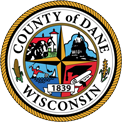
The Tamara D. Grigsby, Dane County Civil Rights Department is charged with maintaining the County's Equal Opportunity and Affirmative Action Plans. This page explains what Equal Opportunity and Affirmative Action are and links to the County's current AA/EEO Plan.
It means access to all available jobs and training, under equal terms and conditions, and with equal benefits and services; without actions, policies, or practices that discriminate among applicants or employees on the basis of race, color, national origin, sex, age, or religion. This includes equality in recruitment, hiring, layoff, discharge, recall, promotion, training, responsibility, wages, vacation, overtime, insurance, retirement, and pension benefits.
Affirmative Action means designing and implementing specific action (e.g. in recruitment, hiring, or training) for the purpose of eliminating the present effects of past discrimination. One such result of past discrimination is the underrepresentation in the workforce of racial and ethnic minorities, women, veterans, and people with disabilities. Affirmative Action attempts to redress these disparities by focusing on equal access to education and employment and granting consideration to these historically excluded groups.
The need for Affirmative Action exists because discrimination exists. Discrimination is the unequal treatment of a class of people. If the result of an action, policy, or practice is unequal; then that action, policy, or practice is discriminatory. It may involve a single act, or it may involve a continuing policy or practice. The action may be intentional or unintentional; purpose or extent is irrelevant when the effect is to deny equal opportunity.
Targets of discrimination usually belong to categories of people who possess imperfect access to positions of power, prestige, and privilege within a society (synonym: subordinates). In addition, targets are usually perceived as a minority group.
The real and/or perceived characteristics used to define a minority group are usually based on:
Bias: A highly personal and unreasoned distortion of judgment.
Differential Treatment: The application of a requirement or rule, written or unwritten, to one class of people and not to another.
Institutional Racism: A social system in which race is a major criterion of role assignment, role rewards, and political control; the result of which is a monopoly of political, economic, social, cultural, and psychological institutions and resources by the ruling elite. Invariably, a social system emerges which is oppressive to all minority groups.
Prejudice: A preconceived opinion that is not based on reason or actual experience.
Protected Class: Each of the groups protected from discrimination under law; they include men and women on the basis of sex; minority groups on the basis of race, color, religion, national origin; veterans; people with disabilities; etc.
Stereotype: Exaggerated, conventional, usually formulaic conceptions, opinions, and/or beliefs associated with a unique category of people. This includes the attribution of identical characteristics to all people in a group, regardless of the actual variation of its group members.